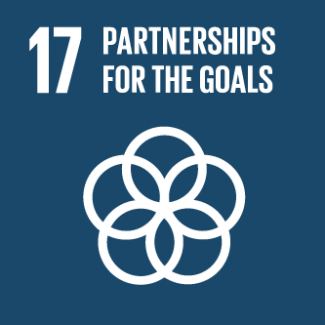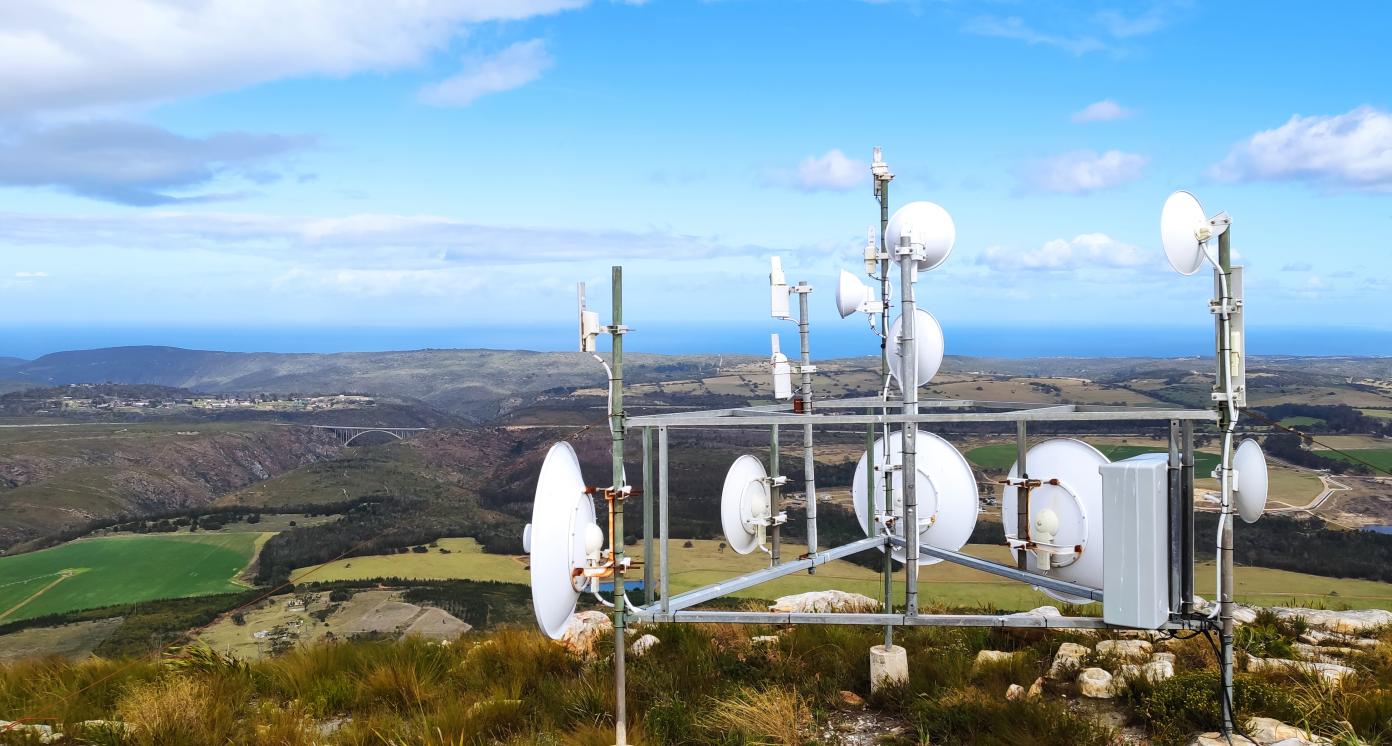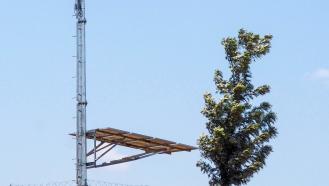Off-grid solar WiFi




Business Model Description
Provide standalone WiFi stations in public areas, offered to users for free and sold to sponsors in exchange for advertising space and securely captured data.
Expected Impact
Close the digital divide to enhance access to knowledge and information for low income communities.
How is this information gathered?
Investment opportunities with potential to contribute to sustainable development are based on country-level SDG Investor Maps.
Disclaimer
UNDP, the Private Finance for the SDGs, and their affiliates (collectively “UNDP”) do not seek or solicit investment for programmes, projects, or opportunities described on this site (collectively “Programmes”) or any other Programmes, and nothing on this page should constitute a solicitation for investment. The actors listed on this site are not partners of UNDP, and their inclusion should not be construed as an endorsement or recommendation by UNDP for any relationship or investment.
The descriptions on this page are provided for informational purposes only. Only companies and enterprises that appear under the case study tab have been validated and vetted through UNDP programmes such as the Growth Stage Impact Ventures (GSIV), Business Call to Action (BCtA), or through other UN agencies. Even then, under no circumstances should their appearance on this website be construed as an endorsement for any relationship or investment. UNDP assumes no liability for investment losses directly or indirectly resulting from recommendations made, implied, or inferred by its research. Likewise, UNDP assumes no claim to investment gains directly or indirectly resulting from trading profits, investment management, or advisory fees obtained by following investment recommendations made, implied, or inferred by its research.
Investment involves risk, and all investments should be made with the supervision of a professional investment manager or advisor. The materials on the website are not an offer to sell or a solicitation of an offer to buy any investment, security, or commodity, nor shall any security be offered or sold to any person, in any jurisdiction in which such offer would be unlawful under the securities laws of such jurisdiction.
Case Studies
Country & Regions
- South Africa: Countrywide
Sector Classification
Infrastructure
Development need
South South Africa faces significant challenges in achieving SDG 9 - Industry, Innovation and Infrastructure, with a score of 45.0. Scores for other goals include 48.7 for SDG 3 - Good Health and Wellbeing, 67.0 for SDG 6 - Clean Water and Sanitation, 79.0 for SDG 7 - Affordable and Clean Energy, and 77.9 for SDG 11 - Sustainable Cities and Communities.(1)
Policy priority
The National Planning Committee identified 9 primary challenges, 4 of which have infrastructure development needs and implications: the public health system cannot meet demand or sustain quality, the economy is unsustainably resource intensive, spatial divides hobble inclusive development, and infrastructure is poorly located, inadequate and undermaintained.(2)
Gender inequalities and marginalization issues
Poor infrastructure can exacerbate the gender gap. In low income countries, women collect over 70% of water and fuelwood. Women spend 200 million hours on water collection every day. Unsafe and low security transport also disadvantage women who are more affected by violence, which affects their wellbeing and workforce participation.(25)
Investment opportunities introduction
President Ramaphosa has an investment drive to mobilise $100 billion for priority sectors, including the energy, water, transport and logistics, and data and ICT sectors.(4) The Sustainable Infrastructure Development Symposium South Africa organised by the Investment and Infrastructure Office within the Presidency seeks to create a $20.5 billion infrastructure fund.(5)
Key bottlenecks introduction
High fixed costs, high levels of debt and low cash reserves may cause a liquidity crisis.(6) Construction was restricted during lockdown and sharp contractions of fixed investment can be expected as firms reconsider or postpone implementation.(7) Projects exposed to foreign currency risk foreign exchange fluctuations and further uncertainty if not previously hedged.(6)
Infrastructure
Development need
South Africa is facing a major unemployment problem, especially among the country's youth.(7),(8),(9) The Quarterly Labour Force Survey for 2020 indicates the number of unemployed persons has increased by 344,000 to 7.1 million. In the first quarter of 2020, 20.4 million young people (aged 15–34 years) were unemployed (63.3% of the total number of unemployed persons).(12)
Policy priority
There is a desperate need for job creation, especially for low skilled jobs. The National Development Plan (NDP) aims to reduce unemployment to 6% by 2030 (14), however unemployment remains one of the country's biggest problems and one of the hardest to fix.
Gender inequalities and marginalization issues
Better integration of female talent into infrastructure planning, management and policy design should be part of the solution for transformative action.(25)
Investment opportunities introduction
South Africa is already embracing digital and other technologies to create positive change in a number of areas.(18)
Key bottlenecks introduction
Digital technologies, skills development and training remain inaccessible for the majority of South Africans.
Engineering and Construction Services
Pipeline Opportunity
Off-grid solar WiFi
Provide standalone WiFi stations in public areas, offered to users for free and sold to sponsors in exchange for advertising space and securely captured data.
Business Case
Market Size and Environment
South Africa has 36.54 million internet users.
In 2020 South Africa had approximately 36.54 million internet users.(21) However, despite this rapid growth, there are still millions of underserved consumers affected by the digital divide.
There is rapid growth in the free public WiFi space.(10)
Provinces and cities in South Africa are starting to invest in coverage of underserviced areas and in their central business districts.(8)
Indicative Return
20% - 25%
Community-based WiFi, with a management fee model, provides a return on investment of 20%.(24)
Investment Timeframe
Short Term (0–5 years)
Relatively low capital expenditure and a high return profile make for a short investment timeframe and a payback period below 5 years.(24)
Ticket Size
USD 1 million - USD 10 million
Market Risks & Scale Obstacles
Market - Volatile
Capital - CapEx Intensive
Impact Case
Sustainable Development Need
South Africa urgently needs innovative solutions to address the digital inequality facing the country.(8) Limited coverage and slow data speeds in outlying areas, together with the relatively high cost of services, exacerbates digital inequality.(8)
South Africa still has many underserved communities, and the cost of data remains a major hurdle for the majority of South Africans.(9)
Many South Africans spend up to 30% of their income on data from mobile telecommunication operators.(20) Currently, WiFi hotspots are not widely available in rural areas.
Gender & Marginalisation
Poor infrastructure affects women's wellbeing and workforce participation.(25)
Expected Development Outcome
Building a public WiFi infrastructure to provide free, uncapped WiFi in communities, townships, universities and transport hubs across South Africa will help close the digital divide.(14),(15)
Providing such connectivity to townships and villages can enable South Africans to participate in the global digital economy.(16)
Free WiFi increases digital inclusion; provides employment opportunities; and improves access to the digital economy at schools, universities and colleges which allows students and teachers to access educational material.
Gender & Marginalisation
Contribute to the integration of female talent by enhancing their access to digital platforms
Primary SDGs addressed

1.4.1 Proportion of population living in households with access to basic services
Proportion of population living in households with access to: (i) improved sanitation facilities: 82.0%; (ii) improved electricity: 89.6%; (iii) improved water facilities: 86.4% in 2017.(27)
South Africa’s key poverty reduction program (2000) provides assistance to 17 million South Africans. In 2015 social grants covered 71.9% of all elderly persons and 92.2% of those classified as poor, one-third of households with children and 61.3% of poor households with children. Expenditures on social grants are expected to rise by 26% between 2016/17 and 2019/20.(26)

9.c.1 Proportion of population covered by a mobile network, by technology
Proportion of population covered by a mobile network - by 3G: 99.5% (2018); by LTE (long term evolution): 85.7% (2018).(27)
N/A

17.8.1 Proportion of individuals using the Internet
The percentage of households using the internet: 59.3% (2016) (28)
N/A
Secondary SDGs addressed

Directly impacted stakeholders
People
Public sector
Indirectly impacted stakeholders
Corporates
Impact Risks
Alignment risk if such models remain niche and don't affect regular operators' pricing through competitive pressure. These models may stifle efforts towards affordable internet pricing.
Impact Classification
What
The outcome is likely to be positive and important, by helping to achieve universal digital inclusion.
Who
Underserved communities
Risk
Low risk
Impact Thesis
Close the digital divide to enhance access to knowledge and information for low income communities.
Enabling Environment
Policy Environment
The South African government has prioritised the national broadband project SA Connect to improve access to modern communication tools and services for South African citizens.(8)
The South African government is driving a project to build a fibre-based network (along the lines of other provincial fibre networks) as a public-private partnership.(8)
Financial Environment
Financial incentives: In North West Province, Kenneth Kaunda District Municipality has announced a budget allocation of R10 million to roll out WiFi within its district, over a 3-year period.(8) The City of Cape Town is committed to funding free WiFi infrastructure.(8)
Fiscal incentives: Social Impact Bonds offer upfront cash resourcing of government approved projects to expedite deployment.(8),(19)
Regulatory Environment
Independent Communications Authority of South Africa: In 2008, this agency published regulations exempting certain uses of spectrum without a frequency license, subject to certain technical restrictions: the 2.4 ISM I(industrial, scientific and medical) band used for WiFi, 5.4 GHz (gigahertz) Outdoor Hiperlan and 5.8GHz ISM bands in rural areas.(8),(17)
Protection of Personal Information (POPI) Act: This Act sets out conditions to lawfully process the personal information of data subjects.(9)
Marketplace Participants
Private Sector
Google Station, ThinkWifi, AP3K, Neotel, Herotel, TooMuchWifi, MetroConnect
Government
City of Cape Town Municipality, SA Connect, Department of Telecommunications and Postal Services (DTPS)
Non-Profit
Project Isizwe, Jozi Digital Ambassadors
Target Locations
South Africa: Countrywide
References
- (1) Sachs, J., Schmidt-Traub, G., Kroll, C., Lafortune, G., Fuller, G., Woelm, F. (2020). The Sustainable Development Goals and COVID-19. Sustainable Development Report 2020. Cambridge: Cambridge University Press. https://dashboards.sdgindex.org/#/ZAF
- (2) National Science and Technology Forum (2019). The National Development Plan. http://www.nstf.org.za/wp-content/uploads/2019/04/All-The-NDP-1.pdf
- (3) Organization for Economic Cooperation and Development (2019). Gender Equality and Sustainable Infrastructure. http://www.oecd.org/governance/gender-equality-and-sustainable-infrastructure-paris-march-2019.htm
- (4) Industrial Development Corporation (2019). The Case For Investing in South Africa. https://sainvestmentconference.co.za/wp-content/uploads/2019/11/The-case-for-investing-in-South-Africa-2019-Executive-summary-31-October-2019.pdf
- (5) Sustainable Infrastructure Development Symposium (2020). Sustainable Infrastructure Development Symposium South Africa. https://sidssa.org.za/
- (6) Deloitte (2020). The Impact of COVID-19 on infrastructure projects and assets. https://www2.deloitte.com/content/dam/Deloitte/ng/Documents/finance/ng-the-Impact-of-COVID-19-on-Infrastructure-project-and-assets_27052020.pdf
- (7) Arndt, C., Davies, R., Gabriel, S., Harris, L., Makrelov, K., Modise, B., Robinson, S., Simbanegavi, W., van Seventer, D. and Anderson, L. (2020). Impact of Covid-19 on the South African economy. https://sa-tied.wider.unu.edu/sites/default/files/pdf/SA-TIED-WP-111.pdf
- (8) Research ICT Africa (2016). Developing Smart Public Wi-Fi in South Africa. https://researchictafrica.net/publications/Other_publications/2016_Public_Wi-Fi_Policy_Paper_-Developing_Smart_Public_Wi-Fi_in_South_Africa.pdf
- (9) World Bank (2019). South Africa Digital Economy Diagnostic Draft Report. http://documents1.worldbank.org/curated/en/464421589343923215/pdf/South-Africa-Digital-Economy-Diagnostic.pdf
- (10) Hypertext (2018). The Current State of Free Public WiFi in South Africa. https://www.htxt.co.za/2018/09/11/the-current-state-of-free-public-wifi-in-south-africa/
- (11) GreenCape (2020). WiFi enabled solar street lights for Witsand: MoU signed between Think WiFi and GreenCape. https://www.greencape.co.za/content/wi-fi-enabled-solar-street-lights-for-witsand-mou-signed-between-think-wfi-and-greencape/
- (12) ITWeb (2019). VAST falls to challenges of monetising public WiFi. https://www.itweb.co.za/content/mYZRXv9PjYWqOgA8
- (13) MyBroadband (2019). The plan to bring free WiFi to the whole of South Africa. https://mybroadband.co.za/news/wireless/328587-the-plan-to-bring-free-wi-fi-to-the-whole-of-south-africa.html
- (14) ThinkWifi (2020). Connecting Communities. https://thinkwifi.co.za/
- (15) Digital Infrastructure (2019). Overcoming the digital divide in emerging economies. http://aei.pitt.edu/85896/1/Digital_Overcoming-Digital-Divide.pdf
- (16) South Africa in the Digital Age (2020). Pathways to Digital Work. https://www.genesis-analytics.com/sada
- (17) Independent Communications Authority of South Africa (ICASA). Licence Exemptions. Notice 926 of 2008. Published on 29 July 2008 in Government Gazette 31290.
- (18) Project Isizwe (2020). How many South Africans have internet at home? https://www.projectisizwe.org/news/opinion/how-many-south-africans-have-internet-at-home
- (19) Skelton, D. (2015). Social impact bonds mooted for Tshwane. http://www.timeslive.co.za/scitech/2015/06/02/Socialimpact-bonds-mooted-for-Tshwane
- (20) Ayanda Mbanga (2019). Rerouting the power to the people: The TooMuchWifi story. https://ayandambanga.co.za/vukuzenzele/rerouting-the-power-to-the-people-the-toomuchwifi-story/
- (21) Statista (2020). Digital population in South Africa at January 2020. https://www.statista.com/statistics/685134/south-africa-digital-population/
- (22) TooMuchWifi (2020). TooMuchWiFi. https://toomuchwifi.co.za/
- (23) US Embassy in South Africa (2020). United States Supports Free Internet Data and COVID-19 Information for Western Cape Communities. https://za.usembassy.gov/united-states-supports-free-internet-data-and-covid-19-information-for-western-cape-communities/
- (24) Interview with Isizwe management team, 14/12/2020.
- (25) Organization for Economic Cooperation and Development (2019). Gender Equality and Sustainable Infrastructure. http://www.oecd.org/governance/gender-equality-and-sustainable-infrastructure-paris-march-2019.htm
- (26) South African Government (2019). South Africa Voluntary National Review: Empowering people and ensuring inclusiveness and equality. https://sustainabledevelopment.un.org/content/documents/23402RSA_Voluntary_National_Review_Report___The_Final_24_July_2019.pdf
- (27) Statistics South Africa (2019). South Africa SDG Report. http://www.statssa.gov.za/MDG/SDGs_Country_Report_2019_South_Africa.pdf
- (28) Statistics South Africa (2017). Sustainable Development Goals: Baseline Report 2017. www.statssa.gov.za
















